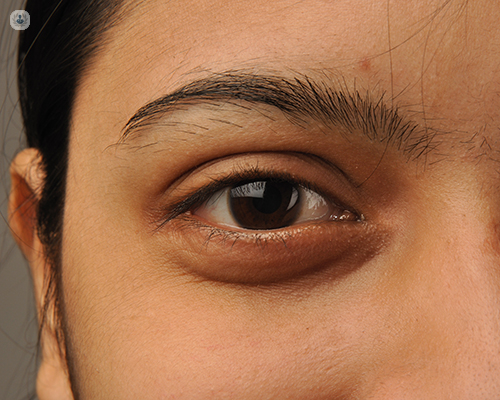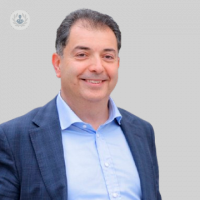How is dry eye diagnosed and treated?
Written in association with:Dry eye is a prevalent condition that occurs when the eyes do not produce enough tears or when the tears evaporate too quickly, leading to discomfort, blurred vision, and potential damage to the ocular surface. The condition can arise from various factors, including ageing, hormonal changes, environmental conditions, and prolonged screen use.

How is dry eye diagnosed and treated?
Dry eye disease is a chronic condition that affects millions of people worldwide, with symptoms ranging from mild discomfort to severe vision impairment. Once primarily associated with older adults and postmenopausal women, lifestyle changes such as increased screen time, remote work, and reduced outdoor activities have caused a significant rise in cases among younger demographics, including men. Studies show that 1 in 3 people in the UK now experiences symptoms of dry eyes, contributing to a global epidemic affecting an estimated 344 million people.
What is dry eye disease?
Dry eye disease occurs when the eye’s tear production is insufficient or the tears evaporate too quickly. This can lead to an unhealthy ocular surface, often caused by meibomian gland dysfunction (MGD), where the glands fail to produce enough lipid (oil) to prevent tear evaporation. Other causes include:
- Blepharitis or rosacea causing gland blockages.
- Contact lens use or prolonged exposure to air-conditioned environments.
- Immune-mediated diseases such as lupus, rheumatoid arthritis, or Sjogren's syndrome.
- Side effects of medications like antihistamines, antidepressants, or hormone therapy.
- Post-surgical effects from procedures like cataract or LASIK surgery. Severe cases can damage the cornea, leading to irreversible vision loss and significantly affecting quality of life.
Recognising the symptoms
Dry eye symptoms include:
- Persistent dryness, grittiness, and itching.
- Burning sensations and redness.
- Blurred vision, especially after prolonged screen use.
- Light sensitivity and excessive tearing (a paradoxical response).
These symptoms can interfere with daily activities like reading, driving, or working on digital devices.
Diagnosing dry eye
Accurate diagnosis of dry eye disease involves advanced diagnostic tools and techniques, such as:
- Meibography: Non-invasive imaging of the meibomian glands to assess their structure and function.
- Tear Break-Up Time (TBUT): Evaluates the stability of the tear film.
- Slit lamp examination: Examines the eyelids, conjunctiva, and cornea for abnormalities.
- Meibomian gland expression: Assesses the quality of meibum (the oily component of tears).
Questionnaires assessing symptoms and lifestyle factors are often used alongside these diagnostic methods to uncover the root causes.
The role of modern lifestyles
Prolonged screen time is one of the leading contributors to dry eye in today’s digital age. Reduced blink rates during screen use disrupt tear distribution, leading to dryness. Studies show that individuals who spend more than 7 hours daily on screens are 50% more likely to develop dry eye symptoms. Environmental factors like air conditioning, pollution, and limited outdoor exposure exacerbate the condition.
Treating dry eye
Effective management of dry eye requires a combination of therapies targeting both symptoms and underlying causes.
- 20-20-20 rule: Looking at an object 20 feet away for 20 seconds every 20 minutes of screen use can reduce strain.
- Environmental adjustments: Using humidifiers and reducing screen brightness can alleviate symptoms.
- Nutritional support: Omega-3 fatty acids and hydration improve tear quality.
Medical treatments
- Artificial tears: Provide temporary relief by lubricating the eyes.
- Prescription eye drops: Anti-inflammatory medications or serum drops for severe cases.
- Punctal plugs: Block tear drainage to retain moisture on the eye surface.
- Warm compresses: Improve meibomian gland function and unclog oil glands.
- Advanced therapies: Intense Pulsed Light (IPL): Targets inflammation and stimulates meibomian glands to improve tear film stability.
- Meibomian gland expression: Clears blockages and restores gland functionality. Reduced blinking while focusing on screens leads to uneven tear distribution and faster evaporation.
Holistic approach
Treating dry eye involves more than just managing symptoms. A holistic approach considers lifestyle, environmental factors, and overall well-being. Nutritional guidance, blinking exercises, and practices like warm compresses and eyelid hygiene play a crucial role in maintaining long-term ocular health.
Conclusion
Dry eye disease is a complex condition that requires personalized care and a multi-faceted approach. By addressing both the symptoms and underlying causes, it is possible to achieve lasting relief and improve overall quality of life. Whether through lifestyle adjustments, advanced therapies, or medical interventions, managing dry eye is essential for preserving eye health and comfort in today’s demanding world.


